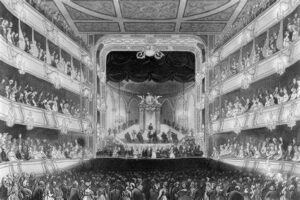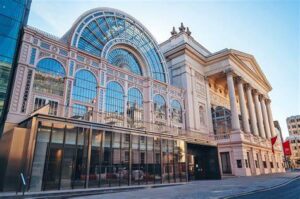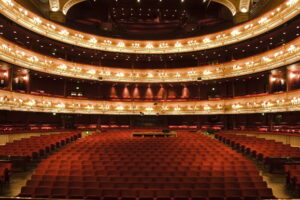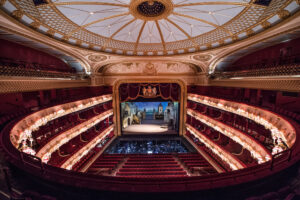
 To like to dislike the opera…that is the question. I think it depends on where you live, how you were raised, and sadly, probably social status. The opera seems to be an entertainment source for the rich, while the middle class prefers concerts. That is not class discrimination, but rather it’s just an observation. Opera houses are usually very ornate and very luxurious…again catering to the kind of people who go there. One such opera house, the Royal Ballet and Opera, once known as the Royal Opera House (ROH), stands as a historic opera house and a significant venue for the performing arts in Covent Garden, central London. The expansive building is commonly referred to as Covent Garden, echoing a former use of the site. It serves as the residence of The Royal Opera, The Royal Ballet, and the Orchestra of the Royal Opera House. Initially, the site’s first theatre, Theatre Royal (1732), was predominantly a playhouse for its first century. Then, in 1734, it hosted its first ballet. The following year marked the beginning of the opera season with works by George Frideric Handel, many of which were composed expressly for Covent Garden and premiered there.
To like to dislike the opera…that is the question. I think it depends on where you live, how you were raised, and sadly, probably social status. The opera seems to be an entertainment source for the rich, while the middle class prefers concerts. That is not class discrimination, but rather it’s just an observation. Opera houses are usually very ornate and very luxurious…again catering to the kind of people who go there. One such opera house, the Royal Ballet and Opera, once known as the Royal Opera House (ROH), stands as a historic opera house and a significant venue for the performing arts in Covent Garden, central London. The expansive building is commonly referred to as Covent Garden, echoing a former use of the site. It serves as the residence of The Royal Opera, The Royal Ballet, and the Orchestra of the Royal Opera House. Initially, the site’s first theatre, Theatre Royal (1732), was predominantly a playhouse for its first century. Then, in 1734, it hosted its first ballet. The following year marked the beginning of the opera season with works by George Frideric Handel, many of which were composed expressly for Covent Garden and premiered there.
The current structure is the third theatre to occupy this site, succeeding two previous buildings that were destroyed by fires in 1808 and 1856. The façade, foyer, and auditorium remain from 1858, while nearly all other parts of the current complex stem from a comprehensive renovation in the 1990s. The main auditorium, with a seating capacity of 2,256, ranks as London’s third largest and comprises four levels of boxes, balconies, and the amphitheater gallery. The proscenium (the part of a theater stage in front of the curtain) measures 48 feet 7 inches in width, and the stage is equally deep and 40 feet in height. The main auditorium has the distinction of being a Grade I listed building.
The Theatre Royal, Covent Garden’s origins are traced to the letters patent granted by Charles II to Sir William Davenant in 1662, which permitted Davenant to run one of just two patent theatre companies (The Duke’s 
 Company) in London. These letters patent was retained by the heirs of the original patentees until the 19th century. Although their location was once lost to history, they have been located and as of 2019, are preserved at the Rosenbach Museum and Library in Philadelphia. In 2024, the Royal Opera House underwent rebranding to become known as the Royal Ballet and Opera.
Company) in London. These letters patent was retained by the heirs of the original patentees until the 19th century. Although their location was once lost to history, they have been located and as of 2019, are preserved at the Rosenbach Museum and Library in Philadelphia. In 2024, the Royal Opera House underwent rebranding to become known as the Royal Ballet and Opera.


One Response to The Royal Opera House